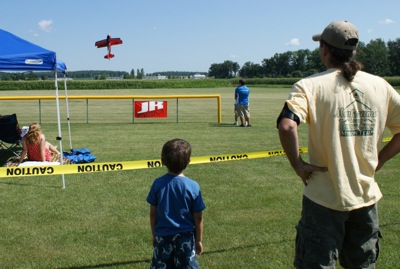Monday, July 12th, 2010
Pollution long a concern
Grand Lake water quality first studied 38 years ago
By Janie Southard
GRAND LAKE - Folks who remember the good old days when Grand Lake was clear must have really good - and long - memories extending well into the last century. A 1972 Daily Standard story tells of the first scientific research project conducted via pontoon on the lake, described then as murky, polluted water.
Former Daily Standard writer John Rasberry described in an April 1972 article the effort of the newly-formed Mercer-Auglaize Environmental Research Association (MAERA) team, which included Wright State University-Lake Campus professors Bill Norris and Ken Strickland.
Norris described the purpose of the group's voyages onto the lake as beginning the "complicated and probably long drawn-out process of learning precisely what pollutants ... are contaminating the lake." He continued that the focus was to identify "the problems that we'll have to solve before we can eliminate the overall problem of one badly polluted lake."
What happened to MAERA is unknown.
Focus again has turned to pollution problems in Grand Lake. The state, for the second consecutive year, is advising people to avoid contact with the water due to excessive toxin levels from blue-green algae blooms. A restoration group has formed, state legislators have toured the water and local people are speaking out on what needs to be done to stop the demise of the lake.
Strickland remembers that first water sampling adventure of 38 years ago, which was described by the newspaper as driving "a large glass tube into the lake bottom for core samples."
"Yes, that was my job but the equipment broke so it was the only trip I was on," Strickland said. "Although I think they did go out other times. What I found was not the muck we expected, but a hard glacial clay."
Professor Norris is deceased, but some of his papers on the sampling trips, which were scheduled for once a month for a full year, may still exist. Lake Campus Professor Robert Hiskey said most of Norris' findings have been borrowed or lost over the years.
"There may be some boxed up in archives. But the problem with the lake has always been the same: Runoff nutrients are feeding the (bacteria). It was the same then as now," Hiskey said.
The article states the group - two Lake Campus professors and seven lay people - had several dry runs before the first excursion to take samples at 10 sites. They boarded the Ohio Division of Parks and Recreation pontoon, operated by Bruce Goodenough, at Jack's landing and headed for the first site at Little Chickasaw Creek. While Strickland probed the bottom for core samples, Jim Loughran conducted depth, temperature, turbidity and humidity tests and measured wave height.
The late Jack Kishler collected water samples for algae tests and Gwen Silvers tested for oxygen content and quality. The late Rudolfs Ozolins of Wapakoneta collected half-gallon samples for metals analysis. Assisting the group was Tom O'Brien, chair of MAERA.
Others on that long ago trip were Rick Holmes, Ken Uhlenhake, Linda Ellinger, Greg Bornhorst and Joe Grieshop.
They were not far into that first discovery trip when the early spring weather delivered a big setback.
"After a (few) hours of bouncing around in a guardrail-less pontoon on wind-whipped waves and suffering from frigid weather, participants in a water sampling field trip decided to cut short the ride around the lake due to cold (literally) feet," Rasberry wrote.
The cold weather sidelined the group after only three site visits: Little Chickasaw, Big Chickasaw and Prairie Creek inlets. Three other sites were tested that afternoon: Montezuma, Grassy and Coldwater Creek inlets.
Norris told Rasberry that the work could be pure tedium and reading about it could become even more tedious before the answer was found.
"That's too bad, really, because projects such as ours need public support and people do not normally support something in which they have no interest," he said. "We'll have to hope that future thoughts of a sweet-tasting glass of water and swimming in a lake free of disease-bearing bacteria will be enough to keep the public on our side."
